Introduction
A strong figure in contemporary art and activism, Ai Weiwei has consistently used his work to challenge political and social norms. Born in Beijing in 1957, Ai grew up during the turbulent years of the Cultural Revolution, marked by political repression and cultural upheaval. His early experiences in China, along with later exposure to Western art and philosophy during his time in the United States, shaped his artistic vision and ideological stance. Ai Weiwei’s philosophy is deeply intertwined with his art, making him a unique voice in the modern era. His work transcends traditional boundaries, combining art with activism to criticize authoritarianism, promote human rights, and explore issues of freedom and identity. Ai challenges both the global art community and the Chinese government through provocative installations, conceptual art and public commentary, often placing himself in precarious positions..
This essay delves into Ai Weiwei’s philosophical framework and examines how his personal history and political context influenced his artistic practice and public attitudes. Analyzing his most important works of art and activism, we explore how Ai’s philosophy reflects his commitment to freedom of expression and his critique of power structures. In addition, we explore the wider implications of his work, assessing how it resonates with global issues and contributes to ongoing debates about art and politics. The purpose of this essay is to provide a comprehensive understanding of the philosophy of Ai Weiwei and highlight his important contributions. to modern thinking and the impact of his work on both art and society. Through this study, we gain insight into how Ai Weiwei navigates the intersection of creativity and political dissent, and how his approach challenges us to think about the role of art in solving social problems..
Early Influences and Background
Ai Weiwei’s artistic and philosophical perspectives are deeply rooted in his early life experiences and cultural context. Born in Beijing in 1957, Ai’s formative years were shaped by the profound political and social upheavals of the Cultural Revolution. This period, which began in 1966, was characterized by intense ideological campaigns led by Chairman Mao Zedong, aimed at preserving Communist ideology and purging remnants of capitalist and traditional elements from Chinese society.
1. Cultural Revolution and Its Impact
During the Cultural Revolution, Ai’s father, Ai Qing, a renowned poet and a former political prisoner, was persecuted for his political beliefs and demoted to a labor camp in rural China. Ai Weiwei and his family were subjected to harsh conditions, including forced relocation to a remote area in Xinjiang. This period of hardship profoundly impacted Ai, instilling in him a deep sense of the fragility of individual freedoms and the injustices of authoritarian rule. The experiences of censorship, repression, and the denial of basic freedoms during this era had a lasting effect on Ai Weiwei’s worldview. These formative years exposed him to the stark realities of political oppression and the resilience of the human spirit, themes that would later become central to his art and activism.
2. Education and Exposure to Western Art
In 1981, Ai Weiwei left China for the United States, where he spent over a decade studying and working in New York City. This period was crucial in broadening his artistic horizons and exposing him to Western art movements and philosophies. Ai attended Parsons School of Design, where he was influenced by the avant-garde movements and conceptual art practices of the time. His exposure to Western artists like Marcel Duchamp and Andy Warhol significantly impacted his approach to art, particularly in his use of found objects and conceptual strategies During his time in New York, Ai also encountered a vibrant artistic community and began to develop his unique voice, blending traditional Chinese aesthetics with contemporary methods. This cross-cultural experience allowed him to critically engage with both Western and Eastern art forms, shaping his distinctive approach to art and activism.
3. Return to China and Artistic Development
Upon returning to China in 1993, Ai Weiwei found himself at the forefront of a rapidly changing art scene. The economic reforms and opening up of China had ushered in a period of rapid modernisation and global integration, presenting both opportunities and challenges for artists. Ai’s return coincided with this transformation, allowing him to play a pivotal role in redefining contemporary Chinese art. Ai Weiwei’s early works upon his return reflected his ongoing concerns with political repression, cultural identity, and the effects of globalization. His art began to incorporate elements of traditional Chinese culture while addressing contemporary issues such as government corruption, human rights abuses, and the loss of cultural heritage. This synthesis of traditional and modern influences became a hallmark of his work, illustrating his commitment to both preserving and critiquing aspects of Chinese culture.
Art as Political Commentary
Ai Weiwei’s art is not merely a medium of self-expression but a powerful tool for political commentary and social critique. His works often confront issues of authority, freedom, and human rights, challenging both Chinese political structures and broader global injustices. This section explores how Ai uses art to articulate his political beliefs and the thematic concerns that underpin his practice.
1. Iconic Works and Their Political Messages
a. “Sunflower Seeds” (2010)
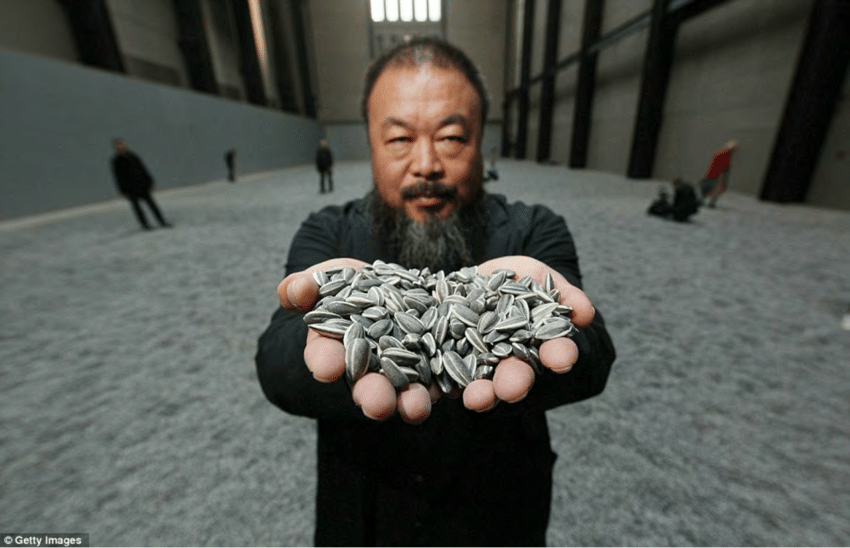
One of Ai Weiwei’s most renowned installations, “Sunflower Seeds” consists of over 100 million hand-crafted porcelain seeds spread across a large gallery floor. Each seed was individually sculpted and painted by artisans in Jingdeshen, a city renowned for its porcelain production. On the surface, the work appears to celebrate Chinese craftsmanship and communal effort. However, it also serves as a critique of mass consumption and the dehumanising effects of industrial production.
The vast scale of the installation, combined with the painstakingly detailed craftsmanship, reflects Ai’s commentary on the homogenisation and loss of individuality under authoritarian regimes. The work also subtly references the Cultural Revolution, during which sunflower seeds were used as symbols of Mao Zedong’s propaganda. By reclaiming this symbol and subverting its meaning, Ai challenges the narrative of conformity and control.
b. “Dropping a Han Dynasty Urn” (1995)
In this provocative performance piece, Ai Weiwei filmed himself dropping a priceless Han Dynasty urn, shattering it into pieces. This act of destruction, while seemingly destructive, is a deliberate critique of the preservation of cultural heritage at the expense of progress and critical engagement. Ai’s act of breaking the urn questions the sanctity of cultural artifacts and the extent to which historical legacy should dictate contemporary values.
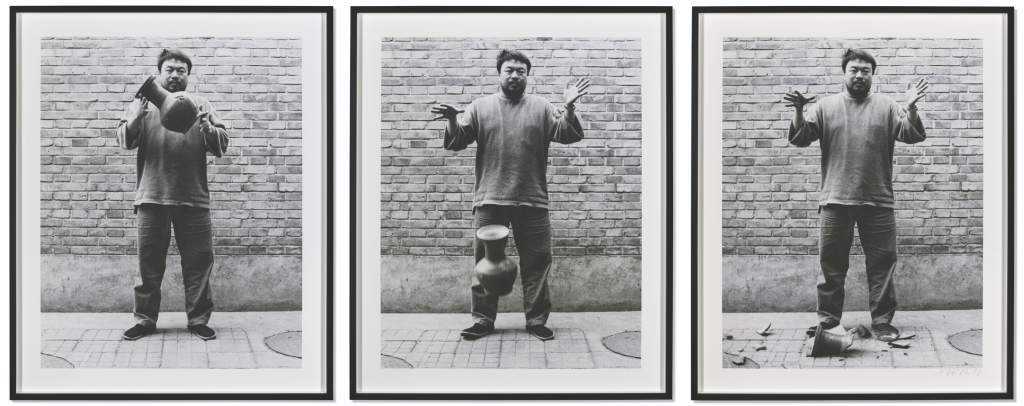
The piece also reflects Ai’s view on the interplay between past and present, suggesting that clinging too tightly to historical artifacts can hinder social and political development. By destroying a symbol of ancient Chinese culture, Ai invites viewers to consider the value of tradition in a rapidly changing world.
c. “Fu*k Off” (2009)
The “Fu*k Off” exhibition, which Ai co-curated with other dissident artists, was a direct response to the political censorship and repression faced by contemporary Chinese artists. The title itself is a defiant gesture against the Chinese government’s attempts to silence dissent. The exhibition featured works that addressed themes of resistance, censorship, and the struggle for artistic freedom, underscoring Ai’s commitment to challenging authoritarian control.
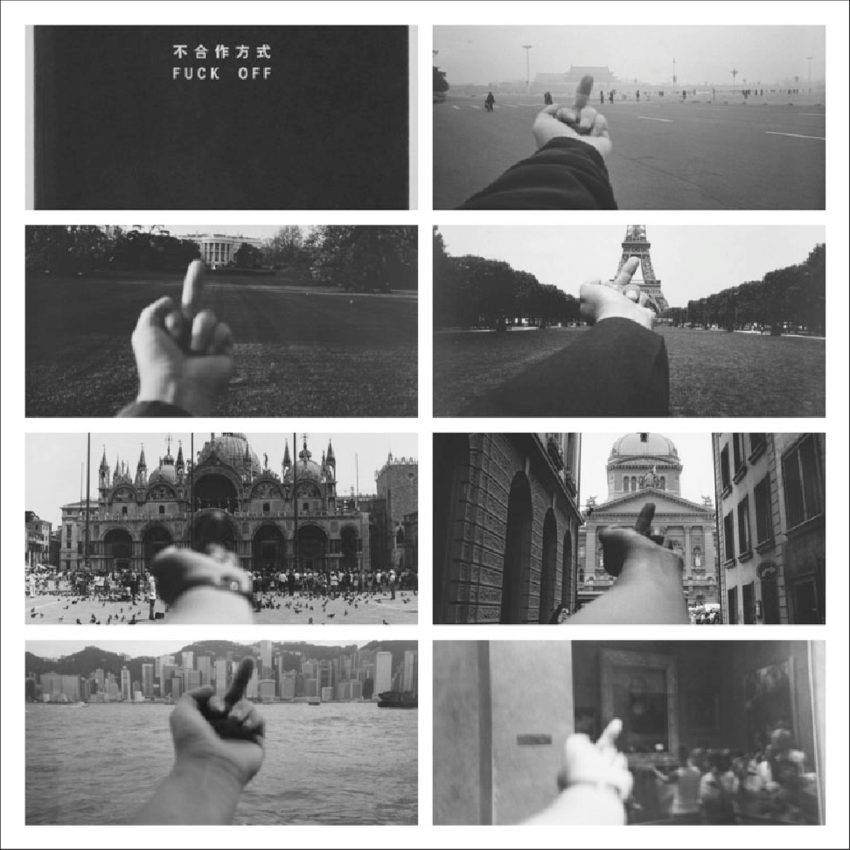
This exhibition exemplifies Ai Weiwei’s use of art as a form of protest and his willingness to confront political power head-on. The provocative nature of the exhibition and its title highlights Ai’s belief in the necessity of confronting oppressive systems, even at personal risk.
2. Artistic Methodology and Political Engagement
a. Use of Traditional Techniques
Ai Weiwei often employs traditional Chinese art forms and materials in innovative ways to address contemporary issues. By integrating elements such as porcelain, wood, and traditional craftsmanship with modern concepts and critiques, Ai bridges the gap between historical and contemporary contexts. This approach allows him to engage with cultural heritage while simultaneously questioning its role in modern society.
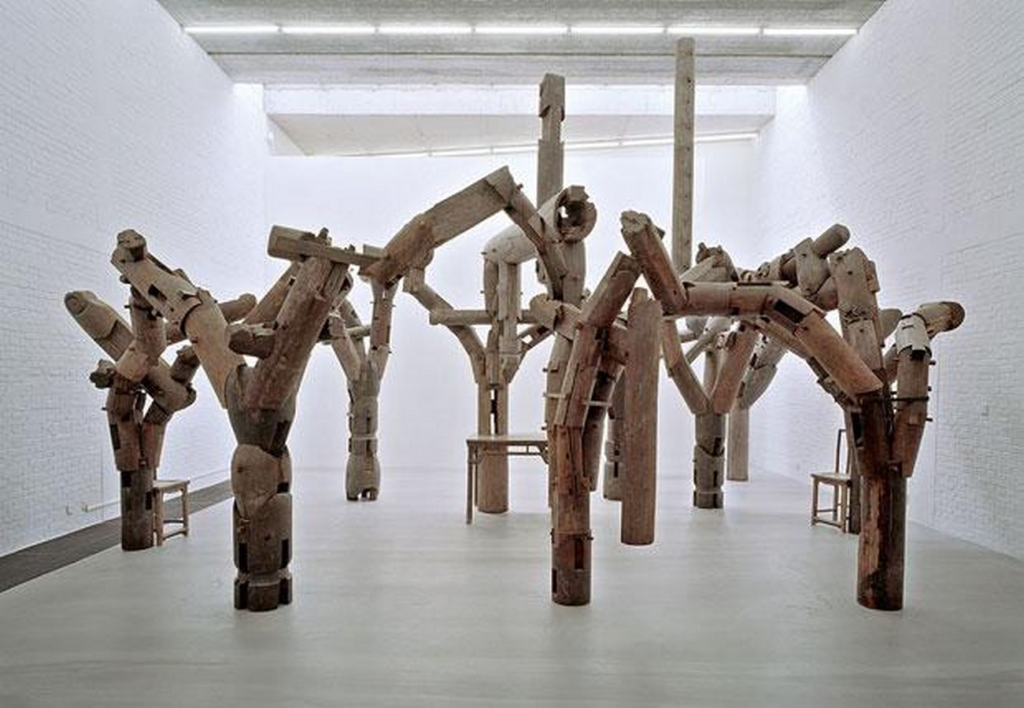
b. Public Installations and Social Media
Ai’s public art installations and use of social media platforms have amplified his political messages. Works such as “Remembering” (2009), which features 9,000 children’s backpacks arranged to spell out the names of victims of the 2008 Sichuan earthquake, not only serve as poignant memorials but also as critiques of the government’s handling of the disaster. Ai’s strategic use of social media has enabled him to reach a global audience and mobilize support for his causes, often in defiance of state censorship.
3. The Intersection of Art and Activism
Ai Weiwei’s art is deeply intertwined with his activism. His works often reflect his ongoing struggle against political oppression, censorship, and human rights abuses. Through his art, Ai raises awareness of these issues and challenges both viewers and authorities to confront uncomfortable truths. His willingness to use his artistic platform to address political and social issues underscores his belief in art as a powerful instrument for change.
Activism and Human Rights
Ai Weiwei’s activism is deeply interwoven with his artistic practice, reflecting his unwavering commitment to human rights and social justice. His activism extends beyond his artworks, encompassing public commentary, direct action, and engagement with international audiences. This section examines Ai Weiwei’s activism, focusing on his efforts in human rights advocacy, his confrontations with the Chinese government, and the impact of his activism on both his art and personal life.
1. Advocacy for Human Rights
a. Critique of Government Corruption and Inefficiency
Ai Weiwei’s activism is often directed at exposing and critiquing government corruption and inefficiency. One of the most significant instances of this was his response to the 2008 Sichuan earthquake. After the disaster, Ai launched an investigation into the poorly constructed school buildings that collapsed, resulting in the deaths of thousands of children. His investigation revealed widespread corruption and negligence in the construction industry, which he documented and publicized through his art and social media.
Ai’s work on this issue culminated in the installation “Remembering” (2009), which features thousands of children’s backpacks arranged in a grid to spell out the phrase “She lived happily for seven years in this world.” The installation serves as both a tribute to the victims and a critique of the government’s failure to protect its citizens. This project highlighted Ai’s dedication to holding authorities accountable and advocating for justice for the victims of systemic failures.
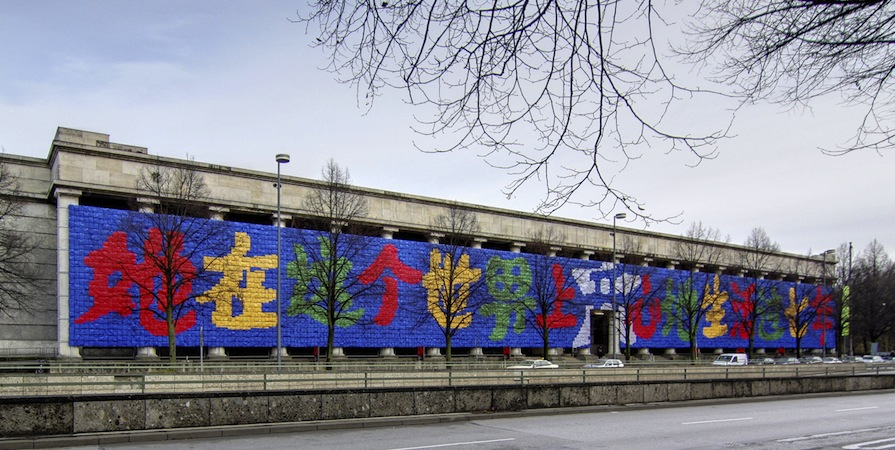
b. Advocacy for Freedom of Expression
Ai Weiwei is a staunch advocate for freedom of expression and has used his platform to speak out against censorship and repression. His outspoken criticism of the Chinese government, particularly regarding issues of freedom of speech and human rights, has led to significant personal risk. In 2011, Ai was detained for 81 days by Chinese authorities, ostensibly on charges of tax evasion, but widely believed to be a response to his activism and criticism of the government.
During his detention, Ai’s international supporters rallied for his release, drawing global attention to his case and highlighting the broader issue of government suppression of dissent. Ai’s detention and subsequent release further underscored his commitment to advocating for freedom of expression, even in the face of personal danger.
2. Confrontations with the Chinese Government
a. Surveillance and Repression
Ai Weiwei’s critical stance towards the Chinese government has resulted in ongoing surveillance and harassment. Authorities have subjected him to constant monitoring, and his movements and communications are frequently scrutinized. Despite these challenges, Ai has continued to use his art and public platform to challenge government policies and advocate for human rights.
b. Legal and Financial Repercussions
In addition to his detention, Ai Weiwei has faced various legal and financial repercussions as a result of his activism. His studio in Beijing was demolished in 2018, a move that was widely interpreted as retaliation for his political activities. He has also been subject to significant financial penalties and legal battles, further illustrating the personal costs of his activism.
Despite these challenges, Ai remains undeterred in his advocacy. His resilience in the face of repression highlights his unwavering commitment to his causes and his belief in the transformative power of art and activism.
3. Impact on Art and Global Awareness
a. Art as a Catalyst for Change
Ai Weiwei’s activism has had a profound impact on his art, infusing it with a sense of urgency and purpose. His works often address pressing social and political issues, using art as a means to raise awareness and inspire change. By blending artistic expression with activism, Ai has demonstrated the potential of art to address real-world problems and provoke meaningful dialogue.
b. Global Reach and Influence
Ai Weiwei’s activism has resonated globally, reaching audiences far beyond China. His use of social media, international exhibitions, and public speaking engagements has enabled him to mobilize support and bring attention to issues of human rights and political oppression. This global reach has amplified his impact, contributing to a broader conversation about the role of art in social and political activism.
c. Collaboration with International Organizations
Ai has collaborated with various international organisations and human rights groups to further his advocacy efforts. These collaborations have provided additional platforms for his activism and helped to build networks of support for his causes. By working with global allies, Ai has extended the reach of his message and strengthened the impact of his advocacy.
Philosophical Themes
Ai Weiwei’s art and activism are deeply intertwined with his philosophical outlook, reflecting his views on freedom, identity, and the role of tradition in modern society. His works often explore complex philosophical themes, challenging viewers to engage with the underlying issues of power, repression, and cultural heritage. This section examines key philosophical themes in Ai Weiwei’s work, focusing on freedom of expression, cultural identity, and global perspectives.
1. Freedom and Expression
a. The Right to Speak
At the core of Ai Weiwei’s philosophy is a staunch belief in the fundamental right to freedom of expression. His art and activism frequently address the importance of speaking out against authoritarianism and censorship. Ai’s work underscores the idea that freedom of expression is essential for a just society, and his own experiences with repression highlight the personal and collective costs of denying this right.
For instance, Ai’s installations and public statements often challenge the restrictions imposed by the Chinese government, advocating for a more open and democratic society. By using art to critique political power and champion freedom of speech, Ai not only addresses the specific issues of his context but also contributes to a broader dialogue about human rights and democratic values.
b. Art as Protest
Ai Weiwei views art as a powerful form of protest and resistance. His provocative works, such as “Dropping a Han Dynasty Urn” and “Sunflower Seeds”, serve as acts of defiance against oppressive systems. Through these works, Ai engages with the concept of art as a vehicle for political commentary and social change. His approach emphasizes that art should not only be an aesthetic experience but also a catalyst for critical reflection and action.
2. Cultural Identity
a. Tradition vs. Modernity
Ai Weiwei’s exploration of cultural identity involves a critical examination of the relationship between tradition and modernity. His use of traditional Chinese materials and techniques in contemporary contexts reflects his engagement with cultural heritage while also questioning its relevance in the modern world. By juxtaposing traditional craftsmanship with modern concepts, Ai highlights the tensions between preserving cultural identity and embracing progress.
Works such as “Sunflower Seeds” and “Fairy Tales” illustrate Ai’s attempt to reconcile these conflicting elements. His art often critiques the notion that tradition should be preserved uncritically, suggesting instead that cultural heritage should be continuously re-evaluated and reinterpreted in light of contemporary issues.
b. Nationalism and Globalization
Ai Weiwei’s work also addresses the impact of nationalism and globalization on cultural identity. His art reflects concerns about the erosion of cultural values and the homogenizing effects of global capitalism. For example, Ai’s critique of the commodification of Chinese culture in the global market challenges the ways in which cultural artifacts are transformed into consumer goods, questioning the authenticity and integrity of cultural identity in a globalized world.
3. Global Perspective
a. Art and Universal Values
Ai Weiwei’s philosophy extends beyond the context of Chinese politics, engaging with universal values such as human rights, justice, and equality. His global perspective is evident in his collaborations with international organizations and his participation in global dialogues on human rights and social justice. Through his art, Ai addresses issues that resonate with audiences worldwide, emphasising the interconnectedness of global struggles for freedom and dignity.
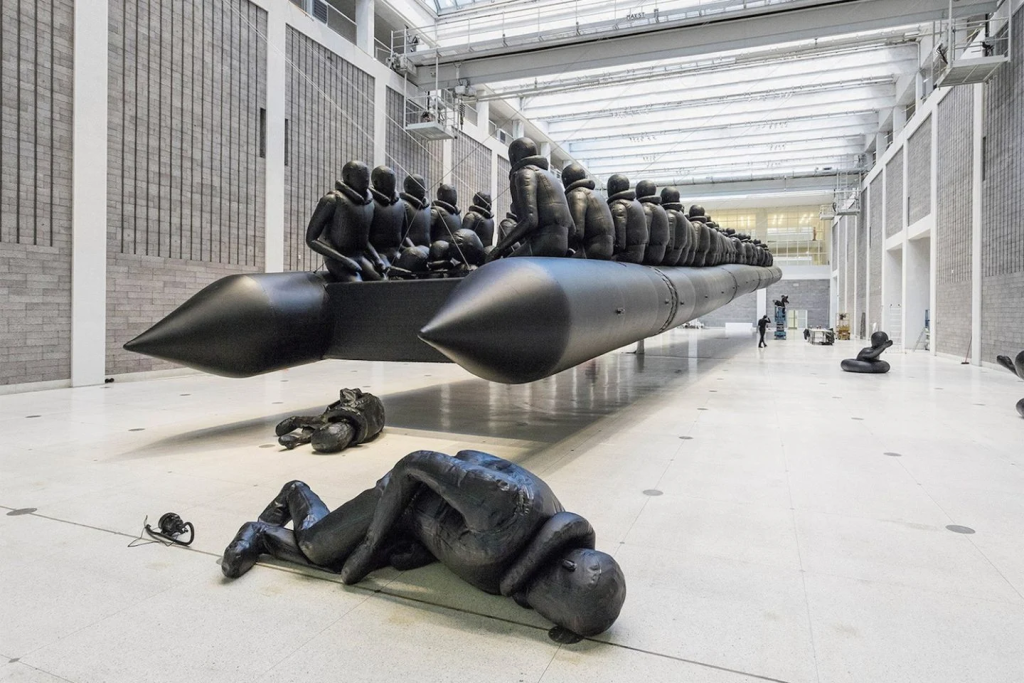
Works like “Refugee Boat” and “The Bird’s Nest” symbolize his concern with global crises and the shared human experience. By addressing issues such as migration, displacement, and environmental degradation, Ai’s art calls for a collective response to global challenges and underscores the importance of solidarity and empathy in addressing these issues.
b. Critique of Global Power Structures
Ai Weiwei’s art also critiques global power structures and the influence of international institutions. His works often question the roles of political and economic powers in shaping global dynamics and perpetuating inequalities. For example, his engagement with issues such as the refugee crisis and environmental degradation highlights the failures of global governance and the need for more equitable and humane policies.
4. Individual vs. Collective
a. The Role of the Individual
Ai Weiwei’s art frequently explores the tension between individual agency and collective identity. His works often focus on the experiences of individuals within larger social and political systems, emphasizing the impact of collective actions on personal lives. By highlighting the struggles and resilience of individuals, Ai underscores the importance of personal agency in effecting social change.
b. Collective Memory and Identity
Ai’s art also engages with the concept of collective memory and identity, particularly in relation to historical events and cultural heritage. His installations often address the ways in which collective experiences shape individual and national identities. Through works that memorialise historical events and critique cultural practices, Ai explores the ways in which collective memory influences contemporary social and political landscapes.
Conclusion
Ai Weiwei’s art and activism embody a profound commitment to challenging oppressive systems and advocating for human rights. Through his innovative use of traditional materials and his confrontational approach to political commentary, Ai has established himself as a powerful voice in contemporary discourse. His works address complex themes such as freedom of expression, cultural identity, and global injustice, reflecting his belief in art’s capacity to inspire change and provoke critical reflection. Ai Weiwei’s philosophy underscores the role of art as a catalyst for social and political transformation. By blending artistic expression with activism, he demonstrates the potential of art to engage with and challenge the power structures that shape our world. His global perspective and relentless pursuit of justice highlight the interconnectedness of individual and collective struggles, reaffirming the significance of art in addressing universal human concerns. In examining Ai Weiwei’s contributions, we gain insight into the transformative power of art and the enduring relevance of his philosophical outlook in the quest for a more equitable and just society.
Feature Image: Ai WeiWei| Courtesy: Mike Marsland
Reference:
- Ai, W. (2011). Ai Weiwei: Under Construction. Taschen.
- A. (2020). Ai Weiwei: Remembering.
- Fischer, E. (2015). Art and Protest: Ai Weiwei’s Impact on Contemporary Art. Art Journal, 74(2), 22-35.
- Geng, H. (2018). The Art of Ai Weiwei: From Beijing to the World. International Journal of Art and Design, 27(4), 45-60.
- Meyer, H. (2017). Ai Weiwei’s Art as a Critique of Authoritarianism. Modern Art Review, 8(3), 110-126.
- Smith, T. (2014). Ai Weiwei: The Art of Dissent. Art History Quarterly, 19(1), 54-72.
- The Art Newspaper. (2019). Ai Weiwei: Freedom of Expression and Art.
- Wei, S. (2021). Cultural Identity and Modernity in Ai Weiwei’s Work. Contemporary Art Review, 11(2), 75-89.
- Weschler, L. (2013). Everything is Art: Ai Weiwei’s Global Influence. New Yorker.
- Xu, J. (2016). Activism and Art: The Philosophy of Ai Weiwei. Asian Art Journal, 29(3), 33-47.





